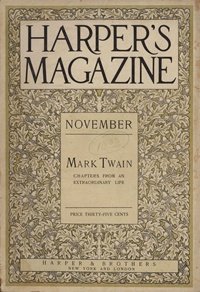by Public Service Associate Hannah

The advent of Johannes Gutenberg’s movable-type printing press in 1440 made the precise and rapid creation of print materials in large quantities possible. This led to waves of literacy across Europe and broke the monopoly the wealthy and elite held on books, news, and print entertainment. And hot off that press came the star of this blog post: magazines!
German theologian and poet Johann Rist published the first magazine in 1663. Titled Erbauliche Monaths-Unterredungen, or “Edifying Monthly Discussions,” Rist’s articles suited the era’s revival of learning. Subject-focused mags, like Kiplinger’s Personal Finance and Car and Driver, still thrive. Meanwhile, the first “periodical of amusement,” Le Mercure Galant, was published by Jean Donneau de Visé, in France in 1672. Sharing art and political news alongside short stories, songs, and gossip, this magazine and those that copied its style were simultaneously looked down upon and immensely popular. Today’s Cosmopolitan and People come to mind.

For four weeks in 1693, London bookseller and author John Dunton published the first periodical that catered specifically to women readers, The Ladies’ Mercury. While I’m probably better off with today’s Women’s Health, Dunton is also credited with initiating the advice column, paving the way for New York Magazine’s Ask Polly and Real Simple’s Modern Manners. Questions like, “Is there an impartial and true history of the world?” and “How can a man know when he dreams or when he is really awake?” were sent in by readers who eagerly sought the next issue for answers from The Athenian Society, the magazine’s mysterious group of experts.
Another first occurred in 1731 when The Gentleman’s Magazine, a London-based monthly founded by Edward Cave, first applied the term magazine to a periodical. Deriving from the Arabic word makhazin (meaning a depot or storehouse), Cave’s choice implied you were picking up a store of written articles or as he claimed, “a repository of all things worth mentioning.” Did anyone else go through the phases of thinking Zoobooks or J-14 were the only things worth mentioning?

And finally, allow me to share a first on this side of the pond. In 1741, Philadelphia printers Andrew Bradford and Benjamin Franklin—who owned rival newspapers—raced to publish the first American. Unfortunately, neither met with much success: Bradford’s American Magazine folded after three months, and Franklin’s General Magazine lasted only six months. On the other hand, Harper’s Magazine launched in New York City in 1850 and is the oldest continuously published monthly magazine in the U.S. and that should be celebrated.

I share this history as a reminder that competition for our attention and the costs of production and distribution are a tale as old as time. Despite living in an age where print media is ‘dying out,’ I subscribe to, check out, and root for physical magazines. Why? I’m glad you asked. Through the glossy pages of Condé Nast Traveler I get to visit other places, and with National Geographic I can see how others live. In the issues of Better Homes and Gardens I find inspiration. Flipping through WIRED I learn cool things, and Columbus Monthly helps me feel more connected to our city. To be honest, with a copy of Vogue I find myself a little overpowered by perfume samples, but you get the idea! May we always let magazines be a tactile reminder it is good to sit, read and enjoy life.
See you at the magazine racks,
Hannah